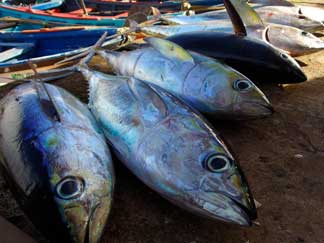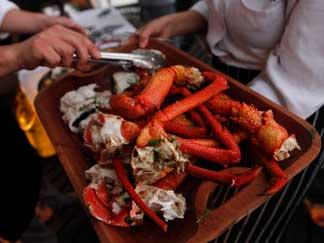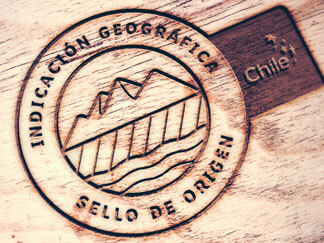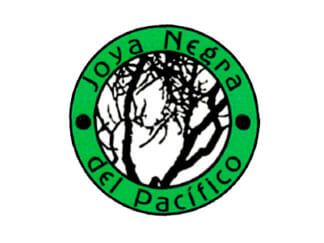Atún de Isla de Pascua / Easter Island Tuna
- Applicant: Easter Island Municipality

Easter Island is situated in the extreme east of Polynesia, in the southern Pacific Ocean, 2040 miles from the coast of Chile, at the height of the port town of Caldera. Its location makes it one of the most remote inhabited islands in the world.
In this unique environment lives the yellowfin tuna (Thunnus albaceres (Bonnaterre)), better known as Easter Island Tuna, an epipelagic oceanic species with a distinguished taste and texture, due to the temperature and quality of the water in this area and a special diet made up to a high degree of endemic fauna, giving it a higher commercial value.
This latter aspect was verified in a survey carried out in January 2012 among culinary professionals familiar with the product. 91.4% of those asked responded that this species of tuna possesses unique attributes, in particular, its flavor and color, while 65.7% responded that their clients value the fish over other varieties due to its image.
Langosta de Juan Fernández / Juan Fernández Lobster
- Applicant: Juan Fernández Municipality
- Location: Juan Fernández Archipelago
- E-mail: mare@islarobinsoncrusoe.cl

Although the name of this crustacean is intimately linked to the Juan Fernández archipelago (which comprises the islands Robinson Crusoe, Alejandro Selkirk, and Santa Clara) located across from the Valparaíso Region coast, it can also be found in the Desventuradas islands (San Félix and San Ambrosia), at the height of the Atacama Region.
This lobster (with the scientific name Jasus frontalis) is distinguished by being endemic to both locations and nowhere else in the world. Morphologically, it can be distinguished by its unique reddish-orange color with brown or black latticework, adorned with stretched lattices in the carapace and abdomen, and narrow, pale bands on its flagella.
These animals are the main source of work for artisanal fishermen and the main livelihood on the Robinson Crusoe island, the permanent habitat of the lobster population in the archipelago. These lobsters are also ambassadors of the Chilean island heritage, satisfying demanding palates across the world with their delicate meat.
Download list of producers
Cangrejo Dorado de Juan Fernández / Juan Fernández Golden Crab
- Applicant: Juan Fernández Municipality
- Location: Juan Fernández archipelago and Desventuradas islands

The golden crab (known by its scientific name Chaceon chilensis) is a crustacean endemic to the Juan Fernández and the Desventuradas islands (San Félix and San Ambrosia), not found anywhere else in the world. It has mainly a carnivore/detritivore diet, made up of fish in the zone such as Juan Fernández trevally, yellowtail amberjack, snoek, graniento, and eels or morays.
It is a recently exploited resource centered around Robinson Crusoe island, highly valued among consumers due to the delicate flavor of its meat. At the same time, the low level of lipids in the meat classify it is a lean dish.
Since 2000, this crustacean has become an option bringing diversity to the traditional artisanal fishing sector of these islands, complementing the fishing of the Juan Fernández lobster (Jasus frontalis).
Download list of producers
Joya negra del Pacífico / Black Gem of the Pacific
- Applicant: Juan Fernández Municipality
- Location: Juan Fernández

Juan Fernández coral handicrafts are made from black coral found in the archipelago at depths between 100 and 300 meters. As it is a protected species, the handicrafts are made from coral which fortuitously surfaces as a result of fishing activities. It is unique in Chile, and has been produced since 1970.
Download list of producers



























